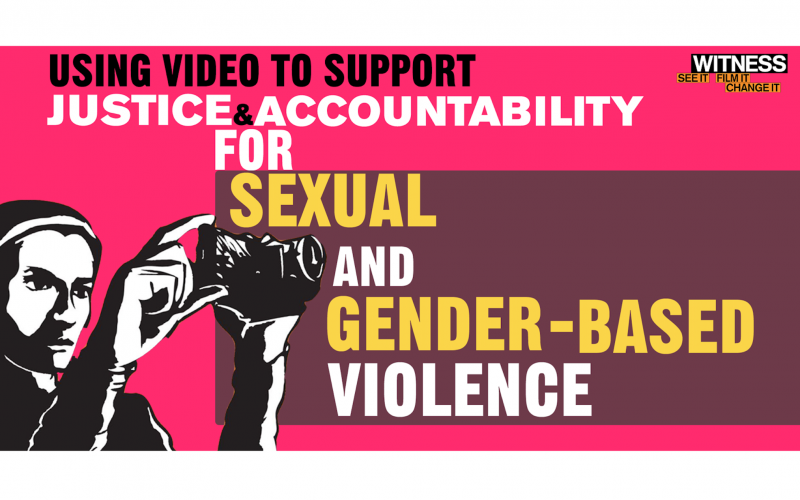WITNESS Shares New Guidance for Community-based Documenters: Using Video to Support Justice and Accountability for Sexual and Gender-based Violence

Human rights defenders tackling sexual and gender-based violence (SGBV) are already using video as a tool for advocacy and to empower survivors. Documenters, activists, advocates, and survivors produce impactful films and documentaries that create space for survivors of SGBV to tell their stories and effect change. However, the use of video to investigate and document SGBV crimes has yet to reach its full potential as trial-ready evidence.
There are good reasons for this. Complex ethical considerations and personal safety challenges make it difficult to secure accountability for SGBV crimes. Additionally, these crimes often happen ‘behind closed doors’ and if survivors do want to come forward, they can face strong stigma and risks to their own personal safety or the safety of those around them. The result is that these crimes are often invisible to society. Nevertheless, considering the widespread impunity of perpetrators of SGBV, there is a real, urgent need for better documentation and more reliable accountability and justice for survivors.
To help combat impunity, WITNESS’ Video as Evidence Program shared comprehensive guidance on ‘Using Video to Support Justice for Sexual and Gender-based Violence’. This guidance looks at how video can be gathered and used to document the legal elements of SGBV crimes. While the core SGBV evidence is almost always survivor or witness testimony, video evidence can strengthen fact-finding and monitoring reports. It can also be used in criminal justice processes to bring perpetrators to justice and to achieve other forms of justice for victims and survivors.
WITNESS’ hope in sharing this guidance is that that high-quality, trustworthy, and actionable video documentation will help to secure accountability and justice for victims and survivors of SGBV.
For an overview of the content and who the guidance has been drafted for, see the English, Spanish and Arabic summaries. The full version can be downloaded in English. Arabic and Spanish versions will be available this spring. If you would like to be notified when these are available, please sign up for WITNESS’ updates in Arabic and in Spanish.
This guidance could not have been drafted without the support and contributions of several CICC members.
